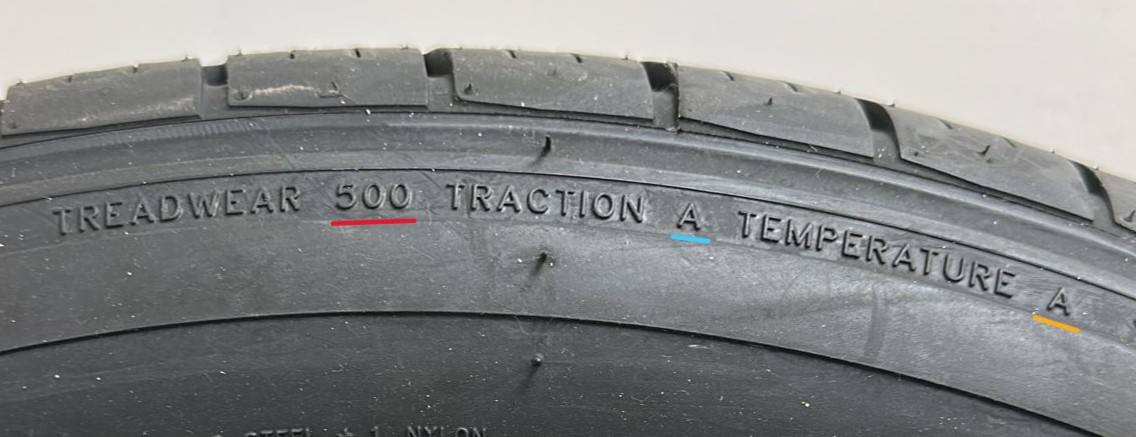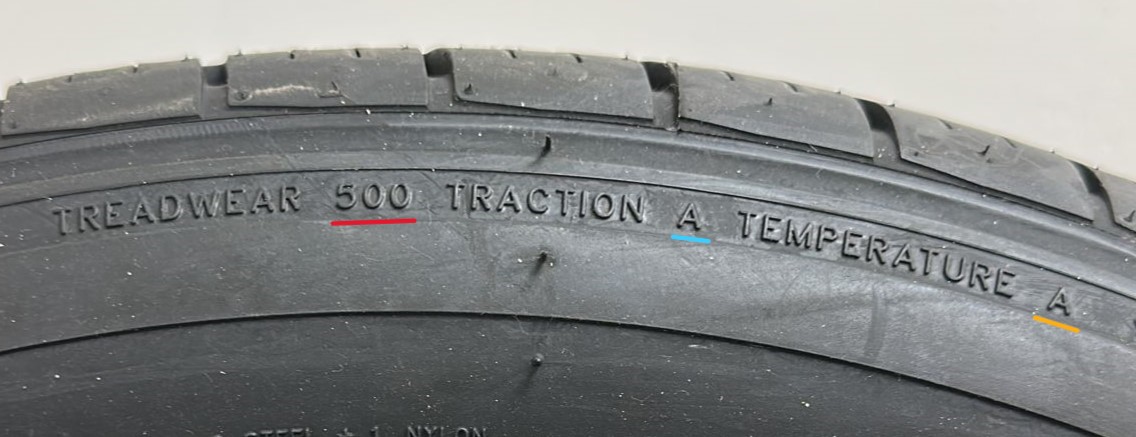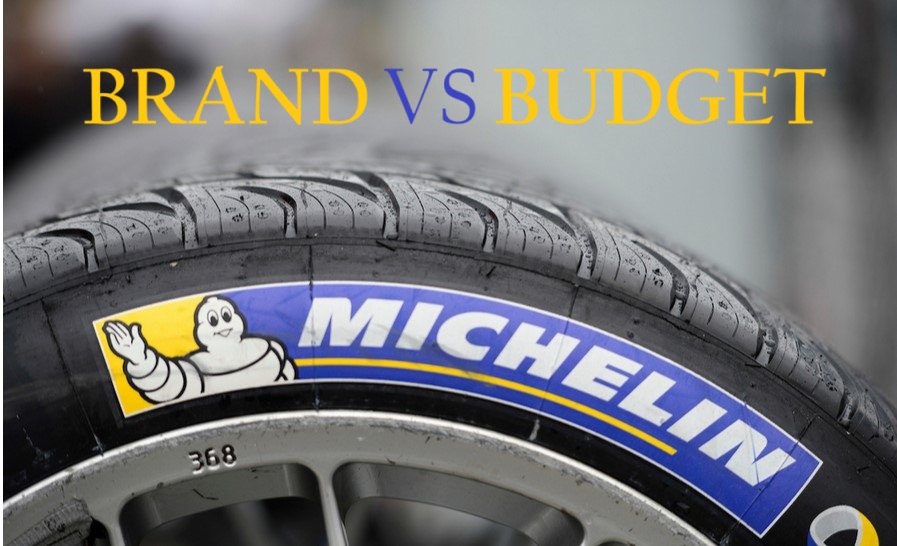Tire UTQG Code
The UTQG (Uniform Tire Quality Grading) system provides standardized information on tire performance for U.S. consumers. It includes: Treadwear Rating: A numerical grade indicating expected tread life. Higher numbers mean longer tread life compared to the baseline rating of 100. Traction Grade: A letter grade (AA, A, B, C) showing the tir

Tire UTQG Code
The UTQG code, part of the Uniform Tire Quality Grading (UTQG) system, is a standardized set of information required for passenger car tires sold in the United States. The UTQG code is typically found on the sidewall of a tire and provides consumers with information about three important performance characteristics:
- Treadwear Rating: A numerical grade that represents the tire's expected tread life. The baseline rating is set at 100, and higher numbers indicate longer tread life compared to the baseline.
- Traction Grade: A letter grade (AA, A, B, or C) that indicates the tire's ability to stop on wet pavement under controlled conditions. Higher grades represent better wet traction.
- Temperature Grade: A letter grade (A, B, or C) that signifies the tire's resistance to heat buildup under controlled conditions. Higher grades indicate better heat resistance.
For example, a tire with the UTQG code "500 A B" means it has a Treadwear Rating of 500 (above average tread life), Traction Grade A (excellent wet traction), and Temperature Grade B (intermediate resistance to heat).
It's important to note that the UTQG code provides standardized information for consumers to compare tires, but real-world performance can be influenced by various factors such as driving conditions, maintenance, and individual driving habits.
Treadwear Rating
The Treadwear Rating is a numerical indicator used to quantify the expected tread life of a tire. It is part of the UTQG system, which provides standardized information about tire performance characteristics for consumers. The Treadwear Rating is a three-digit number that is stamped on the sidewall of a tire.
The Treadwear Rating is a comparative measure. The baseline rating is set at 100, and higher numbers indicate a longer tread life compared to the baseline. For example, a tire with a Treadwear Rating of 300 is expected to last three times as long as a tire with a Treadwear Rating of 100 under the same conditions.
It's essential to note that the Treadwear Rating is a relative measure, and the actual tread life can be influenced by various factors, including driving habits, road conditions, maintenance practices, and climate. Therefore, while the Treadwear Rating can provide a general idea of a tire's durability, it's advisable to consider other performance characteristics and real-world reviews when selecting tires for specific driving conditions.
Tire Traction Index
The term "Tire Traction Index" typically refers to the Traction Grade assigned to a tire. Traction Grade is one of the aspects included in the UTQG system, which is a set of ratings and information required for passenger car tires in the United States. The Traction Grade represents the tire's ability to stop on wet pavement under controlled conditions.
There are three Traction Grades:
- AA: Highest Traction Grade - Indicates the tire has excellent traction performance on wet roads.
- A: Intermediate Traction Grade - Signifies good traction performance on wet surfaces.
- B: Lowest Traction Grade - Represents the minimum level of traction required by the Department of Transportation (DOT).
The Traction Grade is usually indicated on the sidewall of the tire as part of the UTQG information. When comparing tires, a higher Traction Grade generally implies better wet traction performance. It's important to note that the Traction Grade specifically refers to wet road conditions and doesn't necessarily reflect a tire's performance on dry surfaces or in snowy conditions.
Tire Temperature Rating
The tire temperature rating is part of the UTQG system and represents a tire's ability to dissipate heat under controlled conditions. This rating provides information about the tire's resistance to heat buildup during extended periods of use, which can be important for determining the tire's overall performance and longevity.
The temperature rating is expressed as a letter:
- A: Highest temperature resistance
- B: Intermediate temperature resistance
- C: Minimum acceptable temperature resistance
The temperature rating is assigned based on the tire's performance during a standardized test. The test evaluates how well the tire can dissipate heat and maintain its structural integrity at high speeds. Tires with higher temperature ratings (e.g., "A") are expected to handle heat better and, theoretically, provide better high-speed performance and durability.
It's important to note that the temperature rating is primarily relevant for high-performance or high-speed-rated tires, as they are more likely to encounter prolonged periods of intense heat. For everyday driving, the temperature rating may not be as critical a factor in tire selection as other performance characteristics like treadwear or traction.
Typhoon Tire
2450 Finch Ave. West, Unit 5A





